Affiliate links on Android Authority may earn us a commission. Learn more.
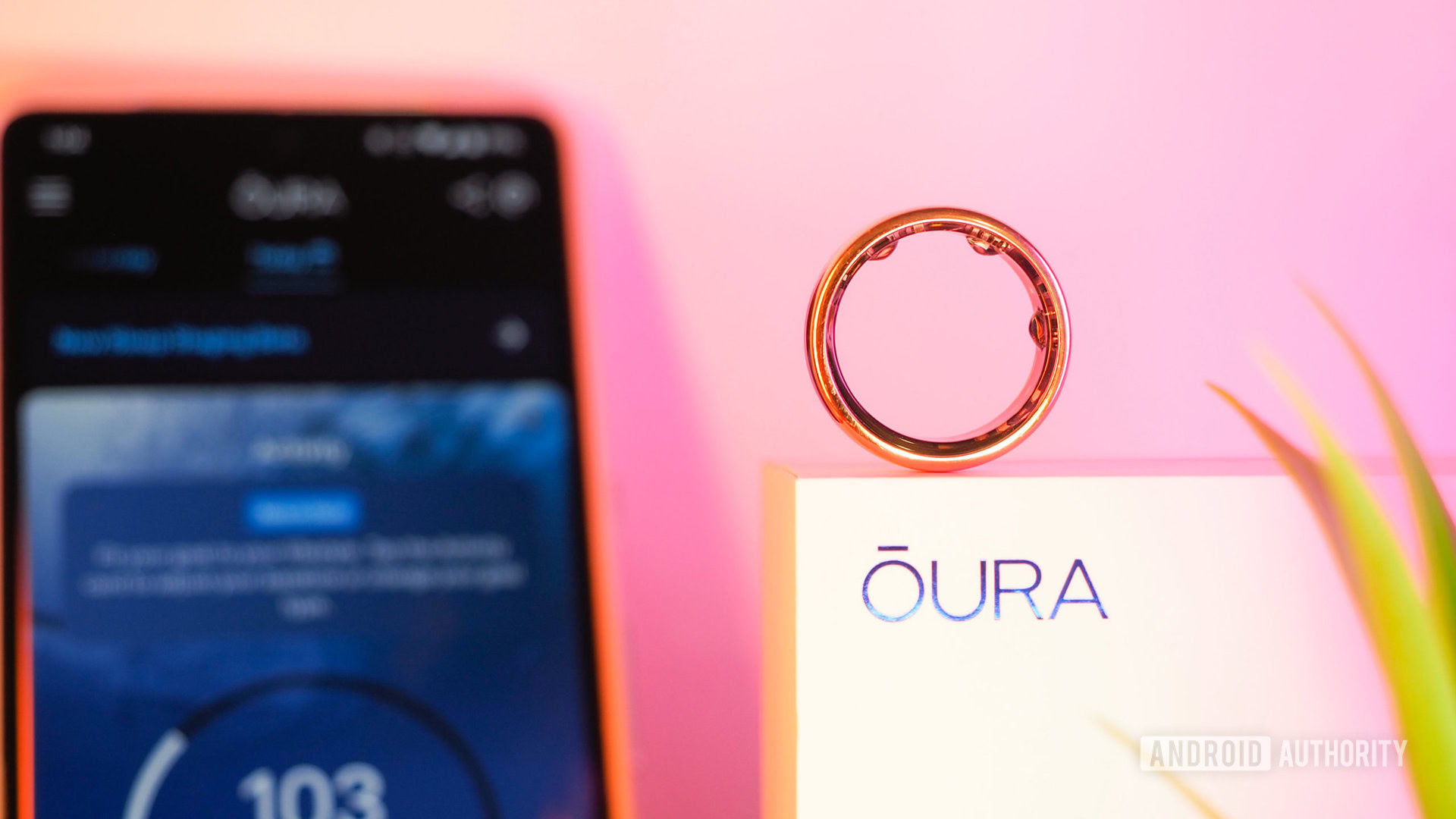


Oura Ring 3
What we like
What we don't like

Oura Ring 3
At a time when most fitness trackers have settled on the large-display, smartwatch-style form factor, finding a minimal wearable that focuses on health and doesn’t draw attention to itself is a rarity. Smart rings straddle that inconspicuous-but-always-there line very well; they can track many metrics through the thin skin of your fingers without disrupting your daily rhythm or sleep. While the category is still nascent, the most famous smart ring, Oura Ring, has already reached its third generation.
I have been wearing the Oura Ring 3 for six months now. Coming from more than 10 years of Fitbit tracking required a bit of adjustment, but I was intrigued by Oura’s promise to focus on overall health and well-being, more than individual stats. So how well does the ring work and did it fulfill its goal of helping me “do what’s best for my body?” Let’s find out in Android Authority‘s Oura Ring 3 review.
What you need to know about the Oura Ring 3
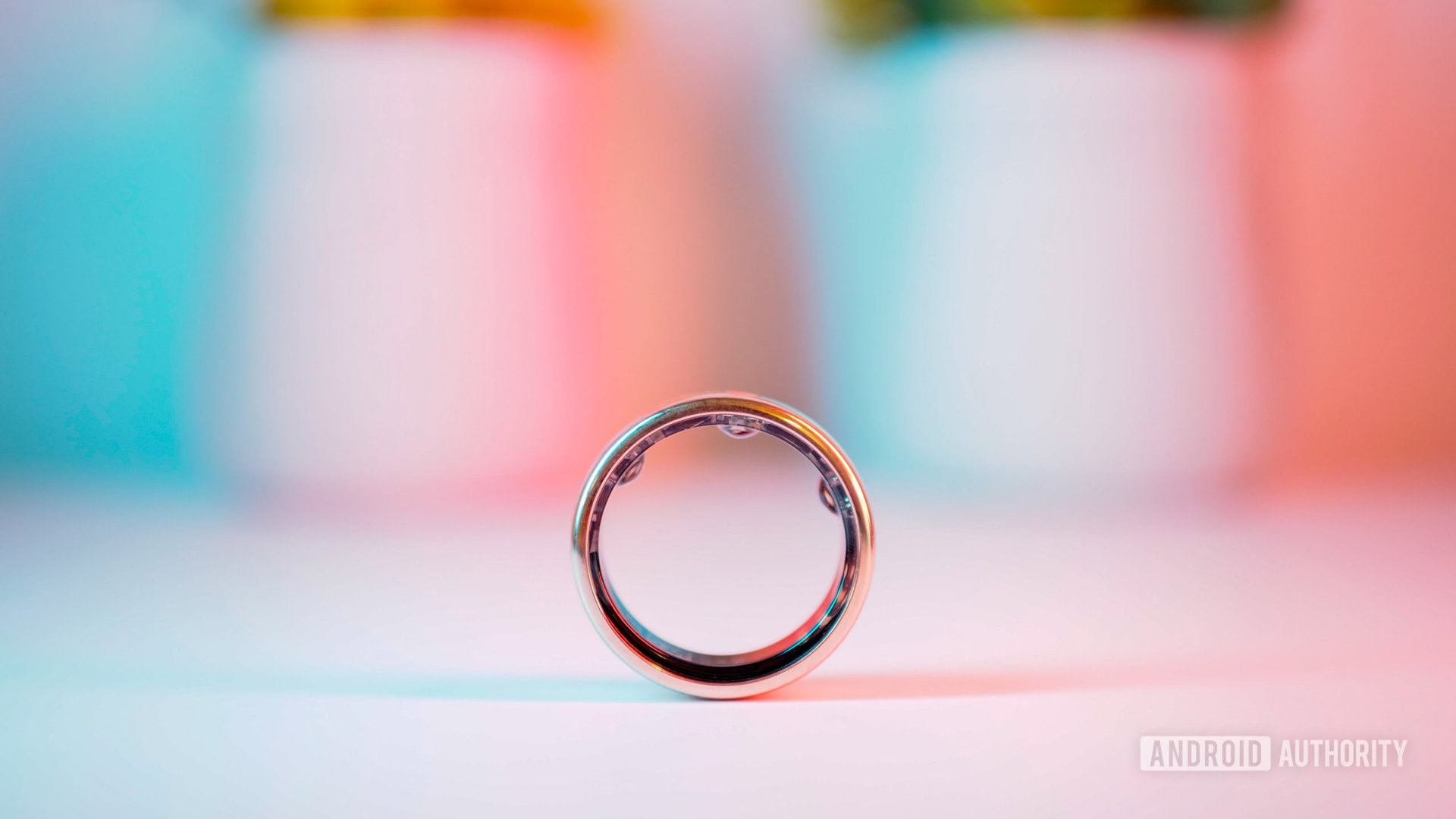
- Oura Ring 3 (Heritage, Silver or Black): $299
- Oura Ring 3 (Heritage, Stealth): $399
- Oura Ring 3 (Heritage, Gold): $449
- Oura Ring 3 (Horizon, Silver or Black): $349
- Oura Ring 3 (Horizon, Stealth): $449
- Oura Ring 3 (Horizon, Gold): $499
- Oura Ring 3 (Horizon, Rose Gold): $549
The Oura Ring 3 looks like a ring and feels like a ring — as simple as that. The short version is that it’s round and goes on your finger. The long version involves a lot of intricate details, so let’s delve into those.
Although the Oura Ring 3 appears like any relatively inconspicuous metallic wedding band from the outside, it’s significantly thicker. The inner layer is a transparent plastic with three protruding sensors and lots of miniature tech. It’s honestly fascinating to look at. The fact that there’s a battery in this thin circular shape feels a bit like magic, not to mention the Bluetooth chip and sensors for heart rate, SpO2, and skin temperature. Yeah, this is thicker than a regular ring, but it’s an engineering wonder.
Oura offers the Ring 3 in two different designs, Heritage and Horizon. Heritage is cheaper ($50 on average) and has a flat top on one side. Horizon, which is the model I tested and that you can see in all photos, is perfectly circular and more expensive. I think Heritage looks a bit more masculine, but tastes differ, so pick whatever works for you. There are several colors to choose from too, with Silver and Black as the base models, plus more premium finishes like Stealth (matte black), Gold, and Rose Gold. I went for the latter because it suits my skin tone and doesn’t attract as much attention as a black or silver ring would.
Oura recommends wearing its rings on the index finger, preferably, with the sensors on the inner side of your hand (palm side). You can also wear it on the middle finger or ring finger. I first tried it on my index but felt its presence almost all the time. I was always more aware of it no matter what I was doing during the day. Luckily, I wear the same ring size on the middle finger, so I moved it and felt an instant improvement. I just forget about it there and can go about typing, reading, walking, cooking, doing chores, and any random activity without actively thinking about the ring.
Since the Oura Ring 3 is waterproof up to 100 meters, you don’t have to take it off while swimming, showering, or doing the dishes. However, I found myself removing it along with my other jewelry every day when I showered, mostly out of habit. Besides, I already put my Pixel Watch on the charger during that time, so I’ve started doing that with the Oura Ring 3. A daily 20-minute top-off has been enough to keep the ring running nicely, without any low-battery warning. When I don’t have the time to charge daily, the Oura Ring 3 easily lasts over four to five days, and takes about 80 minutes to fully charge. I’ve gone on several weekend getaways without packing the charging puck and had no battery life issues. Keep in mind, though, that you shouldn’t go to bed when the battery is below 30% or you won’t get detailed sleep tracking.
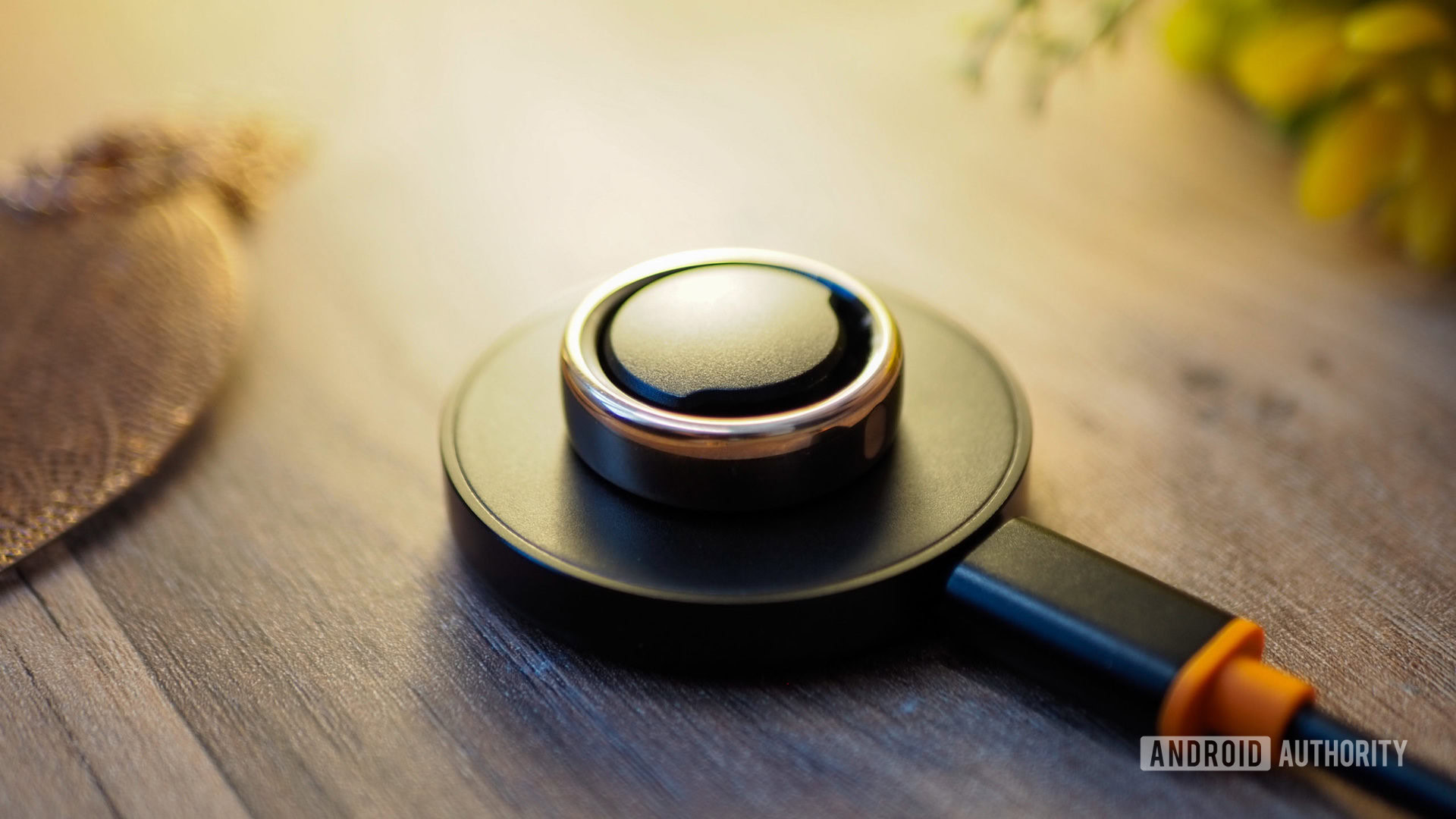
Speaking of charging, the ring comes with a round charging puck with a USB-C input as well as a USB-A to C cable. You just drop the ring in, aligning the sensors with the corresponding indentation, and it’ll start charging. The puck is specific to the size of the ring; you can’t buy a puck for a ring size 8 and use it on a ring size 6 or 10. Although I’m not a fan of proprietary charging in general, this is as seamless as it gets. No weird clamps (looking at you, Fitbit), ports, flaps, pin configurations, or other inconvenient charging methods. Even the cable is separate, so you only need to carry the little puck with you on a trip and use your USB-C cable with it. Even the best smartwatches could learn a lesson from this design.
What’s new in the Oura Ring 3 vs Oura Ring 2?
The Oura Ring 2, which was released in 2018, was a more basic wearable. It tracked sleep, activity, heart rate variability during sleep, and temperature variation. You can use the Ring 2 and access all of its data without paying for a monthly membership.
The Oura Ring 3, which first became available in 2021, is much more powerful:
- It measures your blood oxygen saturation with a new infrared SpO2 sensor.
- It has extra sensors for real-time heart-rate tracking. It can track daytime heart rate in 30-minute intervals as well as real-time heart rate while exercising.
- There are seven temperature sensors (up from three) for more precise temperature monitoring, better period prediction, and better illness prediction.
- All of the extra data leads to more accurate sleep staging detection, plus a new body clock and chronotype feature.
- It has a larger memory (16MB vs 0.5MB on the Ring 2), which lets you store more data and go dozens of days without connecting to a phone.
- It offers some guided meditation, breathing, and sleeping exercises, but only for membership subscribers.
Speaking of the Oura membership, you can use the ring without it, but all you’ll get are the three holistic scores for sleep, activity, and readiness. If you want the SpO2 and heart rate data, all of your trends, period and illness prediction, and any other intricate data, you need to pay $5.99 every month.
Even though it’s not a hard requirement, I can’t imagine paying several hundred dollars for all the tech in the Ring 3 only to get some holistic scores from it. So you better account for that cost in the overall price of the ring.
What’s good?
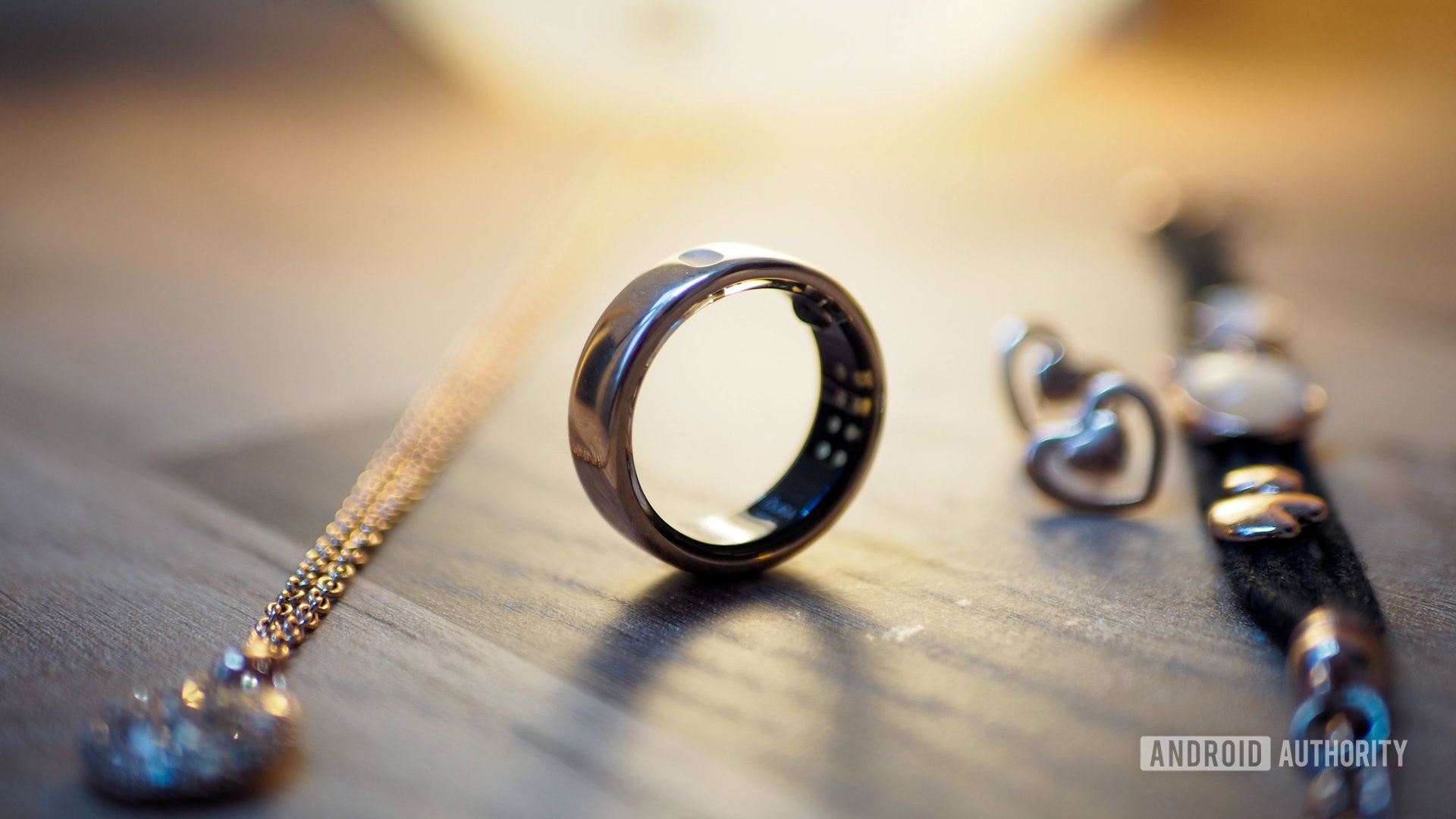
The Oura Ring 3 is both striking and inconspicuous. In the circular Horizon shape, it looks like any other band-shaped ring and fits well with other jewelry and accessories. If you’re used to wearing rings, you’ll get used to it quasi-immediately. Otherwise, it’ll take a couple of days to get through the weirdness of having something around your finger the whole time. Eventually, the Ring 3 melts into the background of both your look and your life.
This is my favorite feature of this form factor and the Ring 3, specifically. Unlike a wearable with a screen, it doesn’t demand my attention multiple times throughout the day; it doesn’t vibrate, light up, or distract me. It doesn’t disrupt my sleep. It just sits stylishly and comfortably on my finger and does its job silently. I’ve almost forgotten I’m wearing a tracker and only remember it when I need to charge it or I’m passing through airport security. I believe the best tech is the one that disappears into your everyday life, and the Oura Ring 3 disappears like a champ.
The best tech is the one that disappears into your everyday life, and the Oura Ring 3 disappears like a champ.
I was recently playing an in-person escape room game and the game master asked us to remove our smartwatches because of their flashlight and experience-disrupting presence. I asked about the Oura Ring 3, which started a long conversation about how the game master and my friends had thought this was a regular ring, and how such a tiny object can contain so many sensors. And yes, I was able to keep the ring on and track my in-room movement because it was deemed harmless enough to the experience.
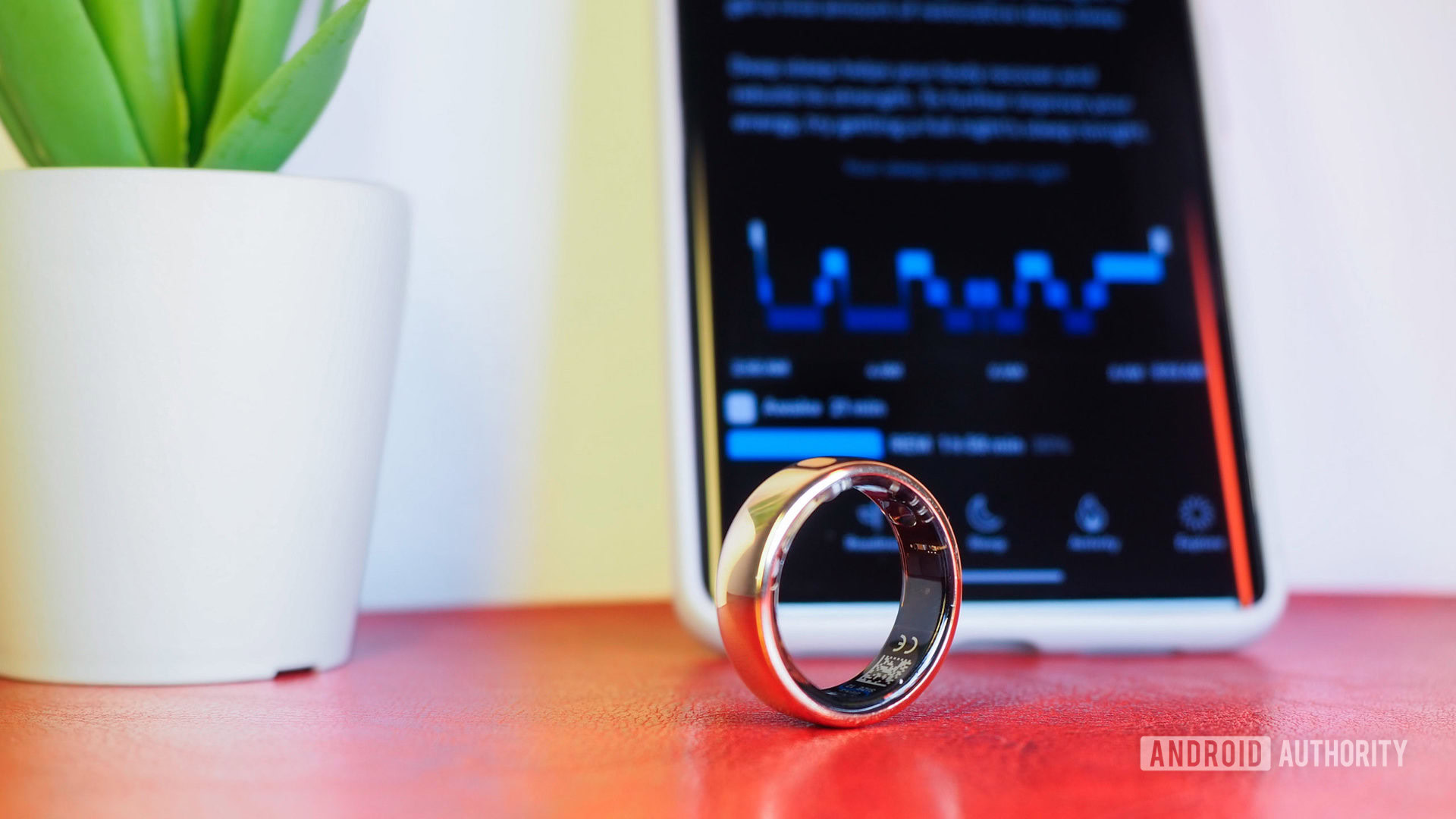
Oura’s approach to health tracking is as unobtrusive as the form factor it has adopted for its wearable. Sure, the Ring 3 can track dozens of health metrics, but it distills that down to three simple scores: sleep, readiness, and activity. Take a look at those every morning to get a better understanding of how well you slept and how ready you are to tackle the day. Take another look during the day to see how active you’ve been and whether you should push a bit further or just relax.
Oura's approach to health tracking is knowledgeable but chill.
Everything is tailored to your personal goals, from being more focused to higher productivity, improving athletic performance, managing stress, or just improving general health. The app will gently nudge you to stretch your legs, chastise you about getting to bed late, or even recommend you take a day off to rest. Again, all of these vary depending on the goal you set.
Forget about wearables that push you to walk more and do more, every day, regardless of how terrible you feel. There’s no ring-closing pressure here, no streaks to keep, and no unrealistic one-size-fits-all goals to meet. I usually spend the month of January hibernating indoors, so I set my Oura to a more relaxed goal. I triggered some rest days when I felt too exhausted after coming back from a trip and then again when I got hit with the flu, plus several times during my monthly cycles. I also started some meditation sessions when I felt stressed. After coming out of my January hiding, I started raising the bar, walking and hiking, and generally being more active. I like that the Oura Ring 3 adapted to me instead of forcing me to adapt to it. Very few wearables do this.
One example is how it asked me to prepare for bed around 9 or 10 PM for about a week when I first started using it, then realized that I’d adopted a much later bedtime (I blame my husband’s night owlism). Now, it asks me to start unwinding around midnight, which better fits my 1-2 AM sleep schedule. Across the last six months, it has notified me that I need to take it easy after particularly busy days or restless nights several times — a huge departure from my Pixel Watch which wants me to move all the time.
The Oura app’s interface follows this ethos very well, focusing on you more than the data. Coming from the likes of Fitbit and Samsung Health, I was a bit disoriented at first. Where are my stats? My graphs, my trends, my data? It took me a while to adjust to not immediately seeing every metric on the landing screen, and instead look at the bits of info Oura has already synthesized for me.
The Oura Ring 3 is one of the best sleep trackers we've tested.
When I need more, I know I can drill down and down, for all the graphs and trends. Oura keeps track of daily, weekly, and monthly data for more than 20 metrics. Among these, Oura’s sleep-tracking data is something else. It’s clear that the company started with a focus on sleep data and branched into other metrics later. This is one of the best sleep trackers I’ve tried.
Even coming from Fitbit’s exceptional sleep tracking, I found Oura’s data more interesting and just as accurate in detecting when I fell asleep and when I woke up. For example, I get to see how long I laid in bed versus how long I slept, my breathing regularity, and how often I moved at night. This is on top of the usual sleep stage detection, heart rate, and heart rate variability measures. I noticed some minor discrepancies in sleep stage data (a quick “movement” that Oura doesn’t consider as a sleep disruption is counted as “awake” by Fitbit), but in general, the overall numbers are often within a few minutes of each other.
All of this data is accessible from Oura’s web app too, which does an excellent job of presenting it and allowing you to detect correlations between several metrics.
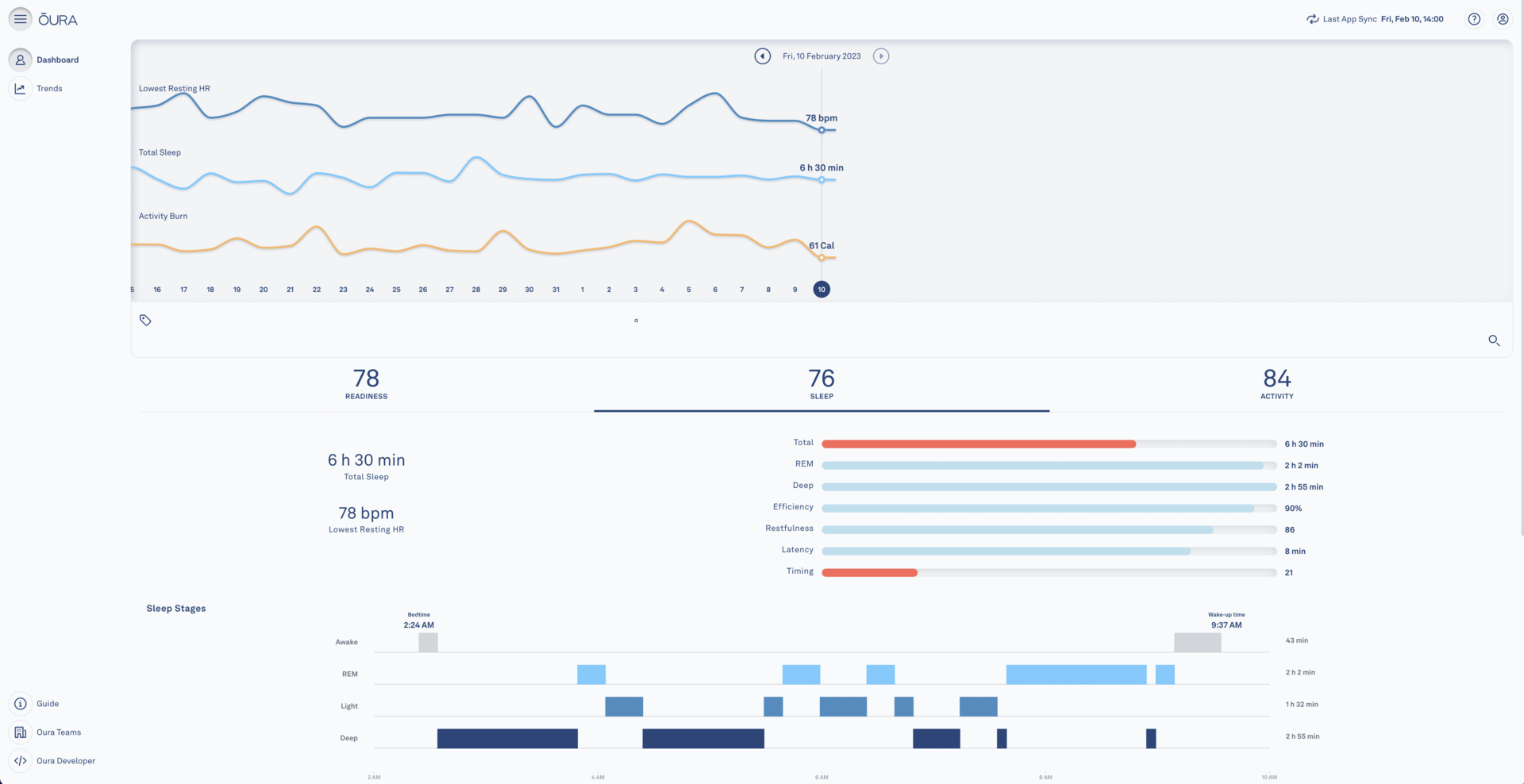
Over the six months that I’ve been using the Ring 3, Oura has rolled out a series of updates and useful new features. The new sleep staging is now out of beta after months of testing, and it’s been joined by a chronotype and body clock feature that shows your body’s tendency to sleep and wake up and compares it against last night’s sleep. Oura has integrated with Natural Cycles too to offer more control over female health, from fertility to birth control. A new social circle feature was added as well, and many more. I really appreciate seeing active development around a product that keeps pushing it forward instead of stalling on an existing featureset.
What’s not so good?

The Oura Ring 3’s biggest weaknesses are due to its form factor and the limits of current technology. Of course, it is significantly larger and thicker than a regular ring — where else would all the tech go? And like most metallic and golden objects, it scratches. The prominent presence means you’re better off removing it when you’re weightlifting or doing any activity that might scratch it. The rose gold I picked has picked up thousands of tiny scratches by now and has also darkened and developed a “natural patina” with time, though mostly around the sides where it’s more in contact with my skin. I’d love to see Oura figure out a more resistant material with the next generation.
Another drawback is the way heart rate is tracked. I keep noticing some frequent 30-minute gaps in my data and one big gap during a long and strenuous walk on January 19. I thought it could be due to the ring twisting around my finger (i.e. the sensors coming toward the top of my hand), but Oura explained to me that this shouldn’t throw it off.
You have to manually start a workout in the Oura app to trigger the workout mode and get precise heart rate and activity data.
Instead, there are two different sets of sensors and algorithms for daytime heart rate and workout heart rate. The former is less demanding on the battery and works best when there’s light motion with little movement and “noise.” The latter is tailored for workouts and should get more frequent and more accurate data, but it drains the battery faster.
The issue is that you have to manually start a workout in the app to trigger the workout mode and get this data. If you forget to do it, which I often (read: always) did, you’ll only get the 30-minute heart rate measure if Oura’s daytime algorithm deems that signal to be reliable enough. This won’t be a problem for anyone used to manually logging a workout in their fitness app. But if you rely on your smartwatch to automatically do it for you, you’ll have to readjust. That’s the case for me. In my six months of wearing the ring, I never remembered to start manual workout tracking — not even once. Oura offers me workout detection after the fact, though, like the Pixel Watch and some low-end Fitbits, but that data is pretty basic. It also sometimes thought I was cycling when I was just walking or taking public transport. Compared to the Apple Watch or premium Fitbit product experience, this is a glaring omission.
Then there’s the issue of price. The Oura Ring 3 is not cheap to begin with, and the quasi-mandatory membership adds to the cost. You only get one month of free membership with your purchase, which is a bit limited if you ask me. I’d expect three, if not six, or even 12 free months of subscription with a product I paid at the very least $299 for.
With a starting price of $299 and $71.88 per year of membership, the Ring 3 is very expensive.
I realize that a paid membership is nowadays the only way a company can hope to survive long-term and that Oura needs to generate revenue without selling my data or showing me ads, so the membership is eventually a positive sign of the product and company’s viability. Still, the end result is that you have to add a not-so-insignificant $71.88 per year to the cost of your Oura Ring 3, and that makes it even more prohibitively expensive.
What I’d like to see in the Oura Ring 4
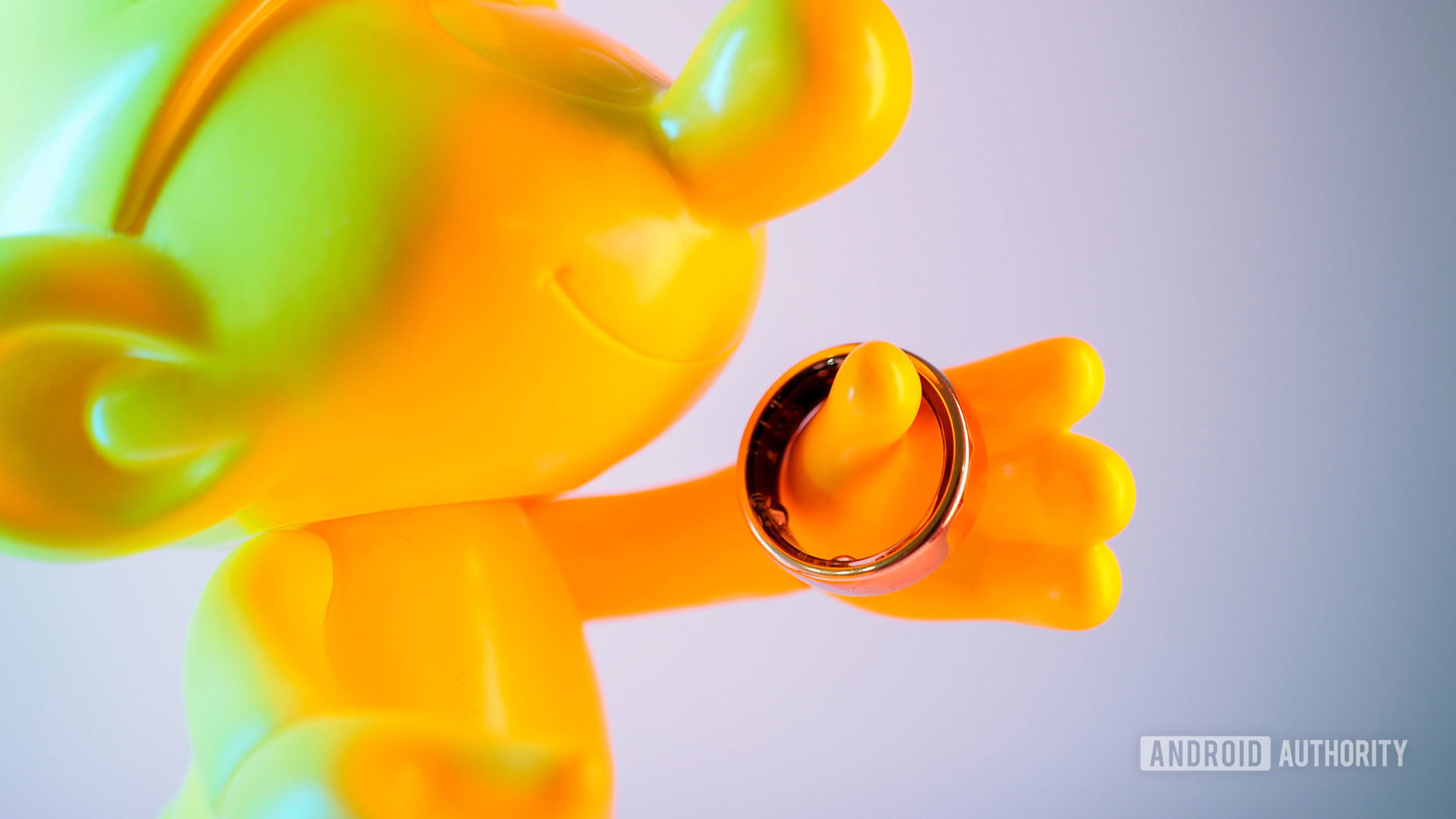
The Oura Ring 3 is an engineering wonder, but technology evolves quickly. Since its release in 2021, chips have gotten smaller and more powerful, so I’d like to see some more impressive features in a potential Ring 4.
Longer battery life would be cool, but I’d sacrifice that for smarter, automatic workout tracking. If the ring detects more strenuous movements, it should automatically switch to its workout heart rate mode and trigger those sensors and algorithms, without requiring me to go into the app to manually start tracking.
Smarter automatic workout tracking and a vibration motor are high on my Oura Ring 4 wishlist.
A vibration motor would be an excellent addition too. If Oura can harness its sleep knowledge to wake me up at the ideal time every day, I’d love that a lot more than an immutable alarm that jolts me when I’m in a deep sleep phase. I’d also love to see a blood glucose sensor in the future. Glycemia can be measured through the skin, though that tech is still in its early stages, so we may be a version or two away from seeing it in the Oura Ring.
Oura can do a lot to improve its app experience in parallel — and this should be done with the current Ring 3, in my opinion. For one, the ring had trouble detecting some naps at first, but has been more consistent in the past couple of months. Oura doesn’t have an app for Wear OS watches (like the Pixel Watch) or home screen widgets on Android, but it supports the equivalent functionality on iOS. I’d appreciate more equality between platforms.
Additionally, I can only manually add workouts for today, not for any previous day. I know this might affect scores, but not everyone is diligent about logging everything, and I’d rather have a new and more precise score with a more accurate history.
In the immediate future, Oura can still improve its app experience to make it more customizable and consistent.
Oura should also allow us to customize the cards on the landing screen (remove, add, sort). If I’m tracking a specific metric, I have to go digging for it every day. There are some inconsistencies in how you swipe between days in different parts of the app, and in how you tap to expand and see more trends. Those are all minor details, but a bit more consistency and personalization would go a long way in making the app more user-friendly.
Finally, Oura’s support for Google’s new Health Connect is very restricted. I’d love to export more of my data (temperature, oxygen saturation, respiratory rate) into Google Fit and other compatible apps, and import other metrics into Oura (weight, for example). More importantly, I’m tired of manually tracking my period on Clue, Fitbit, and Oura; I’d like to log this once and have it carry over.
Oura Ring 3 review: The verdict
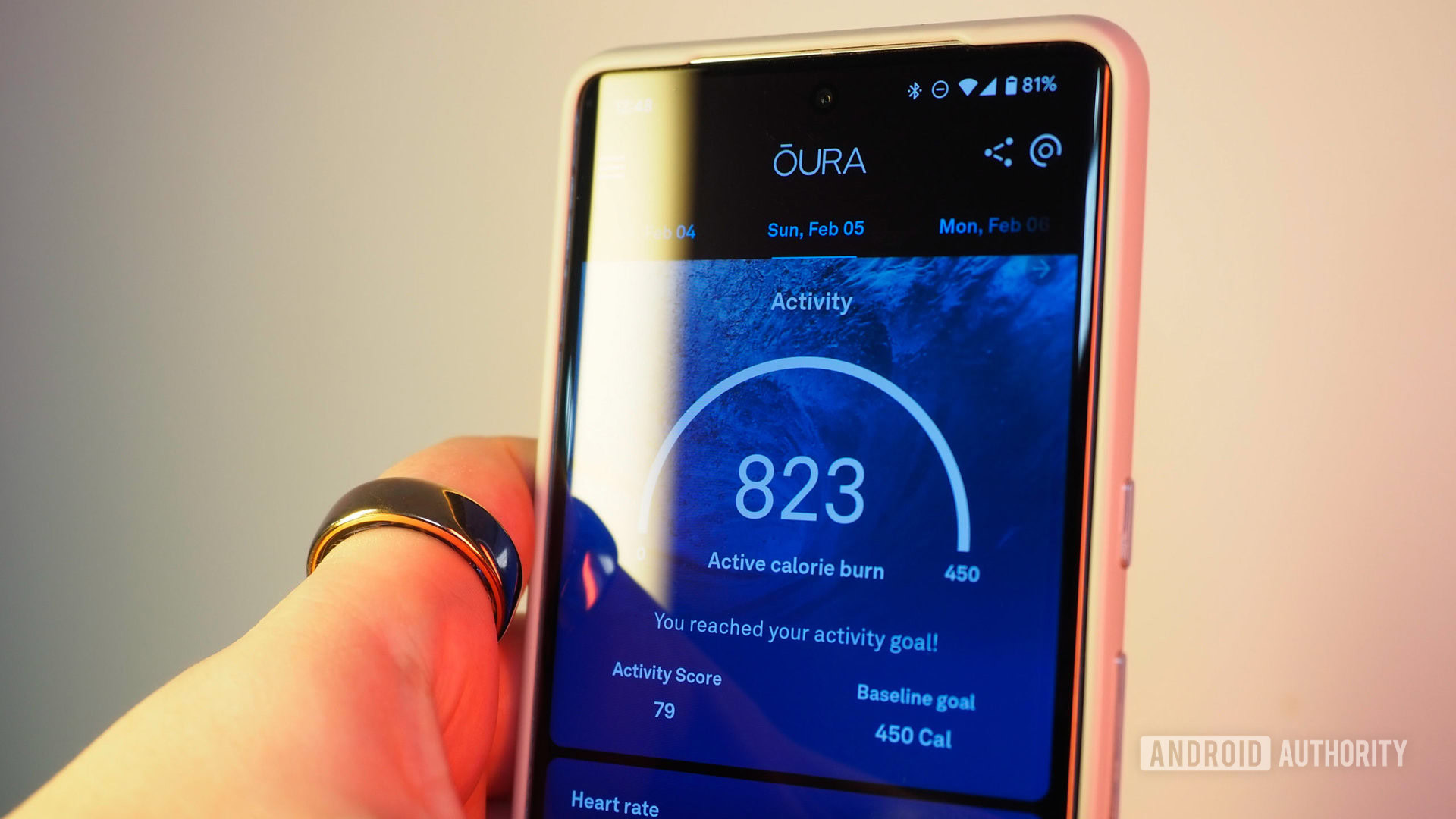
The Oura Ring 3 is an interesting disruptor of the health tracker market, in more ways than one. Even though it attracts attention because of its sleek design, it remains inconspicuous. Unless someone has seen it online, they won’t know that this metallic band hides so many smarts in its inner layer. It also disappears into your everyday life, unlike any other fitness band or smartwatch.
Oura’s approach to sleep and fitness tracking is just as comforting. The focus on your well-being is refreshing, and it’s nice to use a wearable that understands your body, habits, goals, and need for rest, and adapts accordingly. Still, this ring isn’t for everyone.
Garmin-wearing, always-active types who care about precise exercise tracking won’t get their fix here. Similarly, anyone who’s used to a barrage of notifications and constant chastising from their activity tracker will find the relative silence of the Oura Ring 3 deafening. The Oura could be a great secondary tracker for these users, but the price of admission is a bit restrictive in that regard.
If, like me, you're chained to a desk most of the day with bursts of activity and you'd like to maintain your health, the Oura Ring 3 is for you.
However, if you’re chained to a desk or relatively static most of the day, with bursts of activity, and you’d like to maintain a healthy balance between your exercise and recuperation (i.e., most people these days?!), the Ring 3 is perfect for you. It’ll push you, but not too much. It’ll track everything, but hide the data unless you drill down for it.
The Oura Ring 3 currently stands alone in the smart ring arena. Yes, competitors exist, but they’re either still in their early development phases or haven’t been released yet. So if you want an unobtrusive health tracker now, this is as good as it gets, and the best part is that Oura is actively developing more features, so the ring continues to get better with time.


Top Oura Ring 3 questions and answers
Oura will first ship you an Oura Ring sizing kit with plastic rings in every available size. Take your time to wear them for several days, go on with your normal daily activities, and see which size fits you best before ordering the real smart ring. Check our Oura sizing guide for more information.
The Ring 3 lasts four to seven days on a charge, but this will depend on the features you’ve activated. Tracking breathing regularity, for example, reduces the battery life.
Yes, Oura sells standalone charger sets for its Ring 3, but beware, you’ll have to pick the right one for your ring size. It costs $59 or €69.
It takes about 80 minutes to charge the Oura Ring 3 if the battery is depleted.
No. The Oura Ring 3 only measures heart rate and heart rate variability.
Oura recommends wearing the Ring 3 on the index finger, preferably, with the sensors facing the inside of your hand. A notch on the outside of the ring helps you adjust that quickly. You can also wear it on the middle or ring finger.
Yes, the Oura Ring 3 can measure blood oxygen, but only during sleep.
Yes. The Oura Ring 3 is water-resistant up to 100m/328 ft.
Yes, but unsubscribed Oura Ring 3 users will only have access to the three synthesized scores (sleep, activity, and readiness) in the Oura mobile app. You can always check most of your detailed Oura data on the web and export it, though.
Paying for the monthly subscription allows you to access all this data in the app and benefit from the extra meditation and sleep exercises.
- You can explore all your Oura data on the web and export it into a .CSV file.
- From the Android app, you can connect Oura to Google Fit, Strava, and Google’s Health Connect (Fitbit, Samsung Health, Peloton, MyFitnessPal, and more).
- You can also connect Oura to Apple Health and integrate Oura’s data in Natural Cycles.